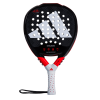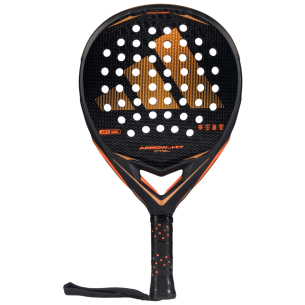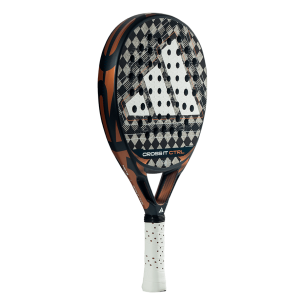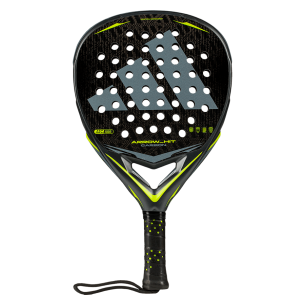
The parts of a padel racket
It is important to know what a padel racket is like and its different parts in order to understand its behaviour and know how to handle it on court. In this article, we’ll explain the different elements that make up the padel racket and what function each one serves.
At first glance it is easy to distinguish the 3 main areas that a racket has. The handle, where the racket is held, the head, which is a large part of the racket and includes the striking surface, and the heart or throat, which acts as a link between both parts. Let’s look at each of those in more detail.
The handle of the racket
 |
The handle of the racket is the part we hold while playing. All padel racket handles are covered by a grip that serves as padding for comfort while holding the racket. In addition, it also improves grip, so you are able to carry out some of the essential padel shots with more ease. It is common and recommended to use an overgrip, that is, a second layer of tape that is placed on the grip and reinforces its performance. The overgrips do not normally come when you purchase the racket - they need to be done so separately, but they can be easily purchased and replaced over time.
The other element that we find in the handle is the cord, which always comes out of the lower part of the handle. It is used to pass it through the wrist and prevent the racket from being thrown if it slips from the hand.
The heart or throat

The heart of the padel racket, also known as the throat, is a fundamental area. It is the part of the racket that acts as a link between the handle and the head. It has the bridges, whose characteristics are decisive for the performance of the racket and can impact whether to play an attacking or more controlled style. Bridges are the physical connection points between the grip and the striking area. Keep in mind that they are one of the fragile areas and may be among the first to deteriorate over time. For this reason, the reinforcements that some rackets have in this part are useful.
The heart is one of the elements that most directly influences the rigidity of the racket. The composition of the bridges and the reinforcements that they can include on are key in this aspect. A more rigid racket will see the ball react quicker when struck, and therefore allow the player to get more power into their game.
The head of the racket
The head is the largest area and the part used for hitting the ball with. It can have different shapes to favour different types of play. The materials used also directly influence its behaviour: the stiffer it is, the more powerful game it allows. A more flexible option offers the player to play a more controlled game.
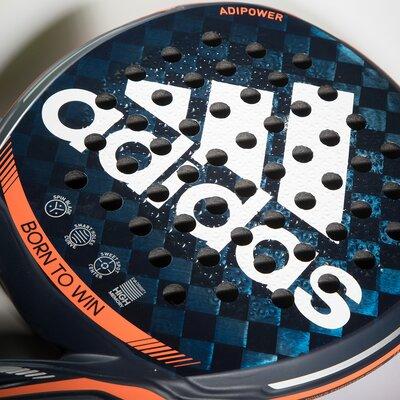
Starting from the outside, we find the frame. It includes the entire contour of the head and is a structural area of the racket. For this reason, it is usually reinforced, to improve the resistance and stability of the racket.
On each side of the racket, and the main area of this equipment, we find the faces. They make up the striking surface and in them we find the holes that are characteristic of a padel racket. But why do padel rackets have holes? The first and main reason is because it is specified by the regulations. The International Padel Federation indicates that rackets must have an indeterminate number of holes. In terms of utility, the holes reduce weight. Years ago it was also thought that they favoured aerodynamics in the shot, but the latest studies do not share this theory. The holes also have a role to generate effects such as spin shots by being capable of altering the flight of the ball.
The sweet spot
If you have been playing padel for a while, you will have heard about the sweet spot. All the surfaces of the padel rackets have an area in which the shot reaches the maximum amount of power, control and/or ball output. That particular area is known as a sweet spot. The weight, materials and the rest of the elements that make up the racket are what influence the position and size of this sweet spot. It is, to understand us, the ideal point of the racket with which to hit the ball.


